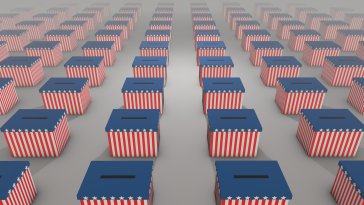
Independence Wars Ahead?
- 20 May 2024 (10 min read)
In the US, core consumer prices have resumed their deceleration in April in year-on-year terms. Slower rents have helped, but even when controlling for this – and the pesky car insurance prices - the short-term momentum has flattened, in contrast with almost systematic re-acceleration since the second half of last year. It is only one monthly print though, and we need to be prudent. Yet, it is tempting to read this piece of good news on the inflation side in the context of a softer dataflow in the real economy. A disappointing number for retail sales out last week, together with the deterioration in consumer confidence, point to a more hesitant household sector.
In principle, this should trigger a divergence in the market reaction across asset classes, pushing the price of risk-free assets up, as the odds of Fed cuts are rising, but also weighing on the price of equity and credit as the economy would become less supportive. Such divergence did not materialise last week. It seems the market is pinning their hopes on a goldilocks scenario in which the Fed’s loosening – and general improvement in financial conditions – would keep the real economy robust enough to minimise any significant deceleration in profits and deterioration in credit quality. The fact that no fiscal austerity is looming in the US also helps.
Still, we want to explore the possibility that, especially under a potential second term for Donald Trump, a conflict arises between a Fed opting for a very prudent removal of the restrictive stance and a US administration ready to provide even more fiscal support next year. This is not a theoretical concern. Trump was explicitly critical of Jay Powell during his first term, at least until the pandemic, and last week a former President of the New York Fed published an Op Ed on the possibility to see the administration exert pressure on the central bank. The legislative process through which the Fed’s status could be reformed would probably be cumbersome, but the institutional set-up of the Fed is quirky, and its independence is less solidly guaranteed than the ECB’s.
Disclaimer
This document is for informational purposes only and does not constitute investment research or financial analysis relating to transactions in financial instruments as per MIF Directive (2014/65/EU), nor does it constitute on the part of AXA Investment Managers or its affiliated companies an offer to buy or sell any investments, products or services, and should not be considered as solicitation or investment, legal or tax advice, a recommendation for an investment strategy or a personalized recommendation to buy or sell securities.
Due to its simplification, this document is partial and opinions, estimates and forecasts herein are subjective and subject to change without notice. There is no guarantee forecasts made will come to pass. Data, figures, declarations, analysis, predictions and other information in this document is provided based on our state of knowledge at the time of creation of this document. Whilst every care is taken, no representation or warranty (including liability towards third parties), express or implied, is made as to the accuracy, reliability or completeness of the information contained herein. Reliance upon information in this material is at the sole discretion of the recipient. This material does not contain sufficient information to support an investment decision. Neither MSCI nor any other party involved in or related to compiling, computing or creating the MSCI data makes any express or implied warranties or representations with respect to such data (or the results to be obtained by the use thereof), and all such parties hereby expressly disclaim all warranties of originality, accuracy, completeness, merchantability or fitness for a particular purpose with respect to any of such data. Without limiting any of the foregoing, in no event shall MSCI, any of its affiliates or any third party involved in or related to compiling, computing or creating the data have any liability for any direct, indirect, special, punitive, consequential or any other damages (including lost profits) even if notified of the possibility of such damages. No further distribution or dissemination of the MSCI data is permitted without MSCI’s express written consent.
Issued in the UK by AXA Investment Managers UK Limited, which is authorised and regulated by the Financial Conduct Authority in the UK. Registered in England and Wales No: 01431068. Registered Office: 22 Bishopsgate London EC2N 4BQ In other jurisdictions, this document is issued by AXA Investment Managers SA’s affiliates in those countries.




